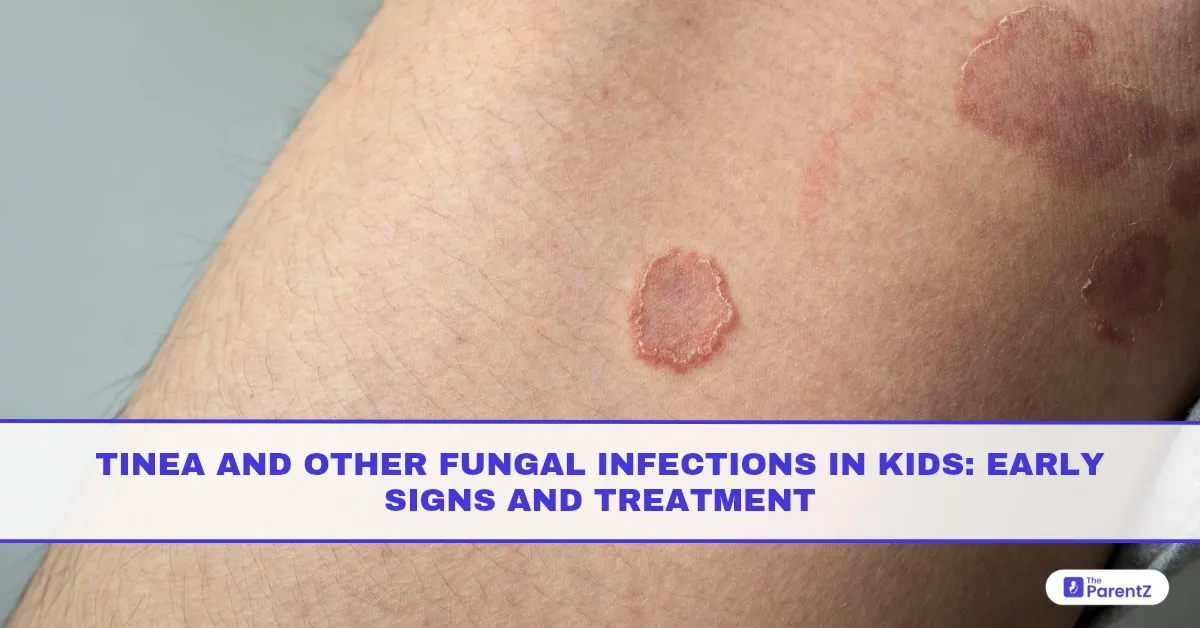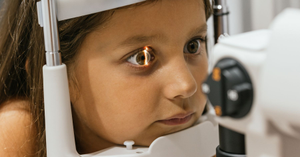It usually starts as a small, itchy patch on your child’s skin, something you might dismiss as dry skin or a bug bite. But over a few days, it grows, becomes scaly, and maybe even ring-shaped. Welcome to the world of fungal infections in children, surprisingly common, highly contagious, but also very treatable.
Among these, tinea (also known as ringworm) leads the list, affecting the skin, scalp, feet, or even nails. If you’re a parent, understanding these infections is your best tool to prevent their spread, relieve your child’s discomfort, and get them back to normal.
What Is Tinea?
Tinea is a group of fungal infections that affect different parts of the body. Despite the name “ringworm,” there’s no actual worm involved just a fungus that feeds on keratin (the protein in skin, hair, and nails).
Different types of tinea are named according to the body part affected:
- Tinea corporis – body (classic ring-shaped rash)
- Tinea capitis – scalp (more common in school-aged kids)
- Tinea pedis – feet (also called athlete’s foot)
- Tinea cruris – groin (jock itch)
- Tinea unguium – nails (fungal nail infection)
These infections are caused by a group of fungi called dermatophytes, which thrive in warm, moist environments.
How Do Children Get It?
Children can catch tinea by:
- Direct skin contact with someone who has the infection (e.g., sharing towels, brushes, or hats)
- Touching contaminated surfaces, including gym mats, floors, or shared clothing
- Pets especially cats, dogs, or guinea pigs with patchy fur or skin lesions
- Walking barefoot in locker rooms or swimming pools (especially for tinea pedis)
Tinea is very contagious, especially in schools, daycare centers, and sports environments.
Early Signs to Watch For
The appearance of tinea depends on the location, but here are some general signs:
1. Tinea Corporis (Body Ringworm)
- Circular or oval red patch with a raised, scaly border
- Central clearing middle of the patch looks normal or lighter
- Mild to intense itching
- Can appear on arms, legs, trunk, or face
2. Tinea Capitis (Scalp Ringworm)
- Scaly, itchy scalp
- Bald patches or areas of hair breakage
- Black dots (broken hairs at the scalp)
- Swollen lymph nodes in the neck (in severe cases)
- May resemble dandruff or cradle cap early on
3. Tinea Pedis (Athlete’s Foot)
- Itchy, peeling skin between the toes
- Cracking or blistering
- Bad odor
- More common in older children who wear shoes for long hours
4. Tinea Cruris (Jock Itch)
- Red, itchy rash in the groin or inner thighs
- More common in boys, especially in hot weather or during sports
5. Tinea Unguium (Nail Fungus)
- Thickened, brittle nails
- Yellow, white, or brown discoloration
- Crumbling edges
When to See a Doctor
While mild cases can sometimes be managed at home, see your pediatrician or dermatologist if:
- The rash is spreading quickly or painful
- There are multiple patches or areas involved
- There is hair loss, pus, or swelling
- The infection hasn’t improved after a week of over-the-counter treatment
- Your child has recurrent infections
How Is Tinea Treated?
1. Topical Antifungal Creams
For most mild skin infections, your doctor may prescribe:
- Clotrimazole, miconazole, or terbinafine creams
- Apply twice daily for 2 to 4 weeks
- Important to continue for the full course, even after the rash fades
Over-the-counter options are available, but prescription-strength ones are often more effective.
2. Oral Antifungal Medications
Needed for:
- Tinea capitis (scalp)
- Severe or widespread skin infections
- Nail infections
- Commonly prescribed drugs include griseofulvin or terbinafine tablets
Oral treatment may be needed for 4–8 weeks, and sometimes longer for nail infections.
3. Shampoos for Scalp Ringworm
- Medicated antifungal shampoos (e.g., ketoconazole or selenium sulfide) may be used twice weekly to reduce spread
- Often used alongside oral medicine, not as a stand-alone treatment
Home Care and Hygiene Tips
- Wash bedding, clothes, and towels regularly in hot water
- Do not share hairbrushes, towels, caps, or helmets
- Keep affected areas clean and dry
- Trim nails short and keep them clean
- Vacuum rugs and sofas if pets are suspected sources
- Disinfect sports gear and mats
Can It Come Back?
Yes. Recurrence is common, especially if:
- Treatment was stopped too early
- Infected contacts (including pets) weren’t treated
- There are underlying skin issues like eczema or poor hygiene
If tinea infections keep coming back, talk to your doctor about:
- Screening close contacts or pets
- Checking for immune deficiencies (rare but possible in chronic cases)
Conclusion: Treat It Early, Stop It from Spreading
Fungal infections like tinea are part of growing up in warm, humid environments but they don’t have to be a constant battle. The earlier you recognize the signs and start treatment, the quicker your child can heal and avoid spreading it to others.
With proper care, some patience, and a few lifestyle tweaks, your child will be back to smooth, itch-free skin in no time.








Be the first one to comment on this story.